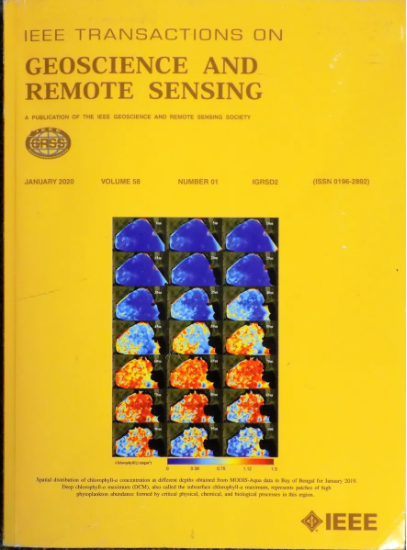3-D Adaptive Multinary Inversion of Magnetotelluric Data Using Unstructured Tetrahedral Mesh
IF 8.6
1区 地球科学
Q1 ENGINEERING, ELECTRICAL & ELECTRONIC
IEEE Transactions on Geoscience and Remote Sensing
Pub Date : 2024-12-16
DOI:10.1109/TGRS.2024.3517633
引用次数: 0
Abstract
The resistivity distribution obtained from traditional inversion methods for magnetotelluric (MT) data often lacks clarity, making it difficult to delineate boundaries between host media and anomalous targets. To address this, we developed a novel 3-D MT inversion approach based on the multinary transformation of model parameters. This method transforms the model resistivity distribution into a desired step-function-like form, enabling explicit identification of interfaces between geological units. The sharpness of the recovered resistivity model is controlled by the standard deviation of the multinary transformation’s error function, and an adaptive technique is introduced to adjust this parameter during the inversion process to account for deviations between true and discrete values in the multinary space. The inversion problem is solved using a data-space Gauss-Newton approach, which enhances memory efficiency and convergence speed. Additionally, unstructured tetrahedral meshes are utilized to accurately model rugged topography and complex geoelectric structures. Synthetic model studies demonstrate the superiority of the adaptive multinary inversion over conventional maximum smoothness inversion and fixed standard deviation multinary inversion. Finally, the method is applied to image subsurface resistivity in the northwest Geysers geothermal field in California, USA, showcasing its effectiveness.使用非结构化四面体网格对磁位图数据进行三维自适应多元反演
传统的大地电磁反演方法得到的电阻率分布往往不够清晰,难以圈定主介质与异常目标之间的边界。为了解决这个问题,我们开发了一种基于模型参数多项变换的三维大地电磁法反演方法。该方法将模型电阻率分布转换为所需的阶梯函数形式,从而能够明确识别地质单元之间的界面。恢复电阻率模型的清晰度由多项式变换误差函数的标准差控制,并引入自适应技术在反演过程中对该参数进行调整,以考虑多项式空间中真实值与离散值之间的偏差。采用数据空间高斯-牛顿方法求解反演问题,提高了存储效率和收敛速度。此外,利用非结构化四面体网格来精确模拟崎岖地形和复杂地电结构。综合模型研究表明,自适应多项式反演优于常规的最大平滑度反演和固定标准差多项式反演。最后,将该方法应用于美国加利福尼亚州西北Geysers地热田的地下电阻率成像,验证了该方法的有效性。
本文章由计算机程序翻译,如有差异,请以英文原文为准。
求助全文
约1分钟内获得全文
求助全文
来源期刊

IEEE Transactions on Geoscience and Remote Sensing
工程技术-地球化学与地球物理
CiteScore
11.50
自引率
28.00%
发文量
1912
审稿时长
4.0 months
期刊介绍:
IEEE Transactions on Geoscience and Remote Sensing (TGRS) is a monthly publication that focuses on the theory, concepts, and techniques of science and engineering as applied to sensing the land, oceans, atmosphere, and space; and the processing, interpretation, and dissemination of this information.
 求助内容:
求助内容: 应助结果提醒方式:
应助结果提醒方式:


